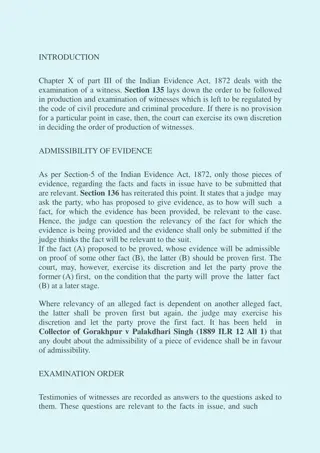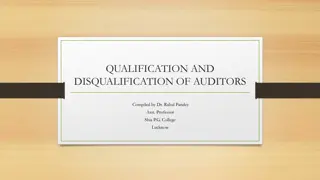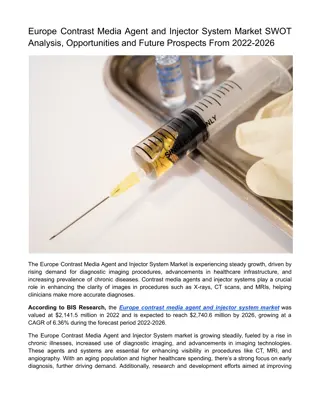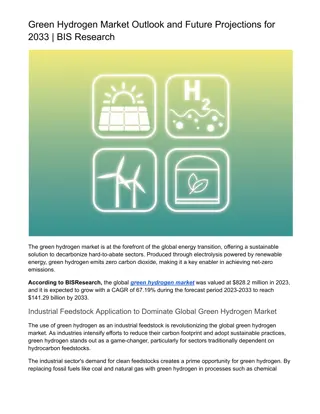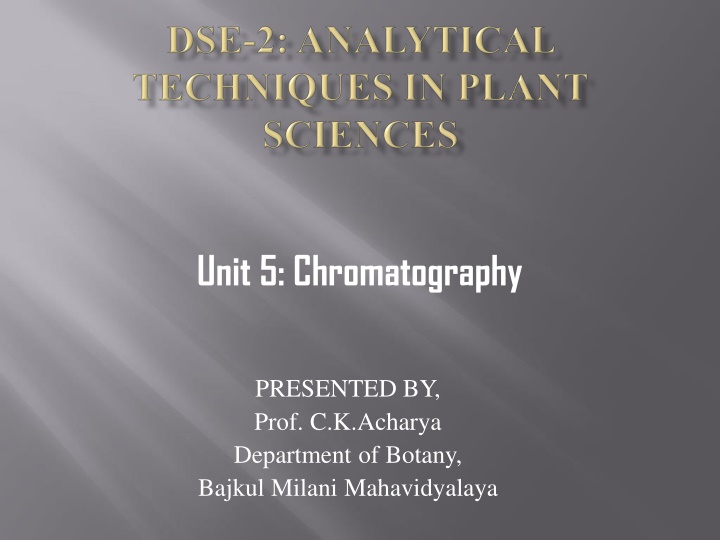
In-Depth Guide to Thin Layer Chromatography Technique
Learn about Thin Layer Chromatography (TLC), a valuable technique for isolating non-volatile mixtures. Understand how TLC works, factors affecting its efficiency, components required, and its applications in medicine, biochemistry, and natural product identification.
Download Presentation

Please find below an Image/Link to download the presentation.
The content on the website is provided AS IS for your information and personal use only. It may not be sold, licensed, or shared on other websites without obtaining consent from the author. If you encounter any issues during the download, it is possible that the publisher has removed the file from their server.
You are allowed to download the files provided on this website for personal or commercial use, subject to the condition that they are used lawfully. All files are the property of their respective owners.
The content on the website is provided AS IS for your information and personal use only. It may not be sold, licensed, or shared on other websites without obtaining consent from the author.
E N D
Presentation Transcript
Unit 5: Chromatography PRESENTED BY, Prof. C.K.Acharya Department of Botany, Bajkul Milani Mahavidyalaya
Thin Layer Chromatography is a technique used to isolate non-volatile mixtures. The experiment is conducted on a sheet of aluminium foil, plastic, or glass which is coated with a thin layer of adsorbent material. The material usually used is aluminium oxide, cellulose, or silica gel. On completion of the separation, each component appears as spots separated vertically. Each spot has a retention factor (Rf) expressed as: Rf= dist. travelled by sample / dist. travelled by solvent The factors affecting retardation factor are the solvent system, amount of material spotted, adsorbent and temperature. TLC is one of the fastest, least expensive, simplest and easiest chromatography technique.
Like other chromatographic techniques, thin- layer chromatography (TLC) depends on the separation principle. The separation relies on the relative affinity of compounds towards both the phases. The compounds in the mobile phase move over the surface of the stationary phase. The movement occurs in such a way that the compounds which have a higher affinity to the stationary phase move slowly while the other compounds Therefore, the separation of the mixture is attained. On completion of the separation process, the individual components from the mixture appear as spots at respective levels on the plates. Their character and nature are identified by suitable detection techniques. travel fast.
Before Experiment, let us understand the different components required to conduct the procedure along with the phases involved. Thin Layer Chromatography Plates ready-made plates are used which are chemically inert and stable. The stationary phase is applied on its surface in the form of a thin layer. The stationary phase on the plate has a fine particle size and also has a uniform thickness. Thin Layer Chromatography Chamber Chamber is used to develop plates. It is responsible to keep a steady environment inside which will help in developing spots. Also, it prevents the solvent evaporation and keeps the entire process dust-free. Thin Layer Chromatography Mobile phase Mobile phase is the one that moves and consists of a solvent mixture or a solvent. This phase should be particulate-free. The higher the quality of purity the development of spots is better. Thin Layer Chromatography Filter Paper It has to be placed inside the chamber. It is moistened in the mobile phase. starting with the Thin Layer Chromatography 1. 2. 3. 4.
The qualitative testing of Various medicines such as sedatives, local anaesthetics, anticonvulsant tranquilisers, analgesics, antihistamines, steroids, hypnotics is done by TLC. TLC is extremely useful in Biochemical analysis such as separation or isolation of biochemical metabolites from its blood plasma, urine, body fluids, serum, etc. Thin layer chromatography can be used to identify natural products like essential oils or volatile oil, fixed oil, glycosides, waxes, alkaloids, etc. It is widely used in separating multicomponent pharmaceutical formulations. It is used for the purification of samples and direct comparison is done between the sample and the authentic sample. It is used in the food industry, to separate and identify colours, sweetening agent, and preservatives It is used in the cosmetic industry. It is used to study if a reaction is complete.


